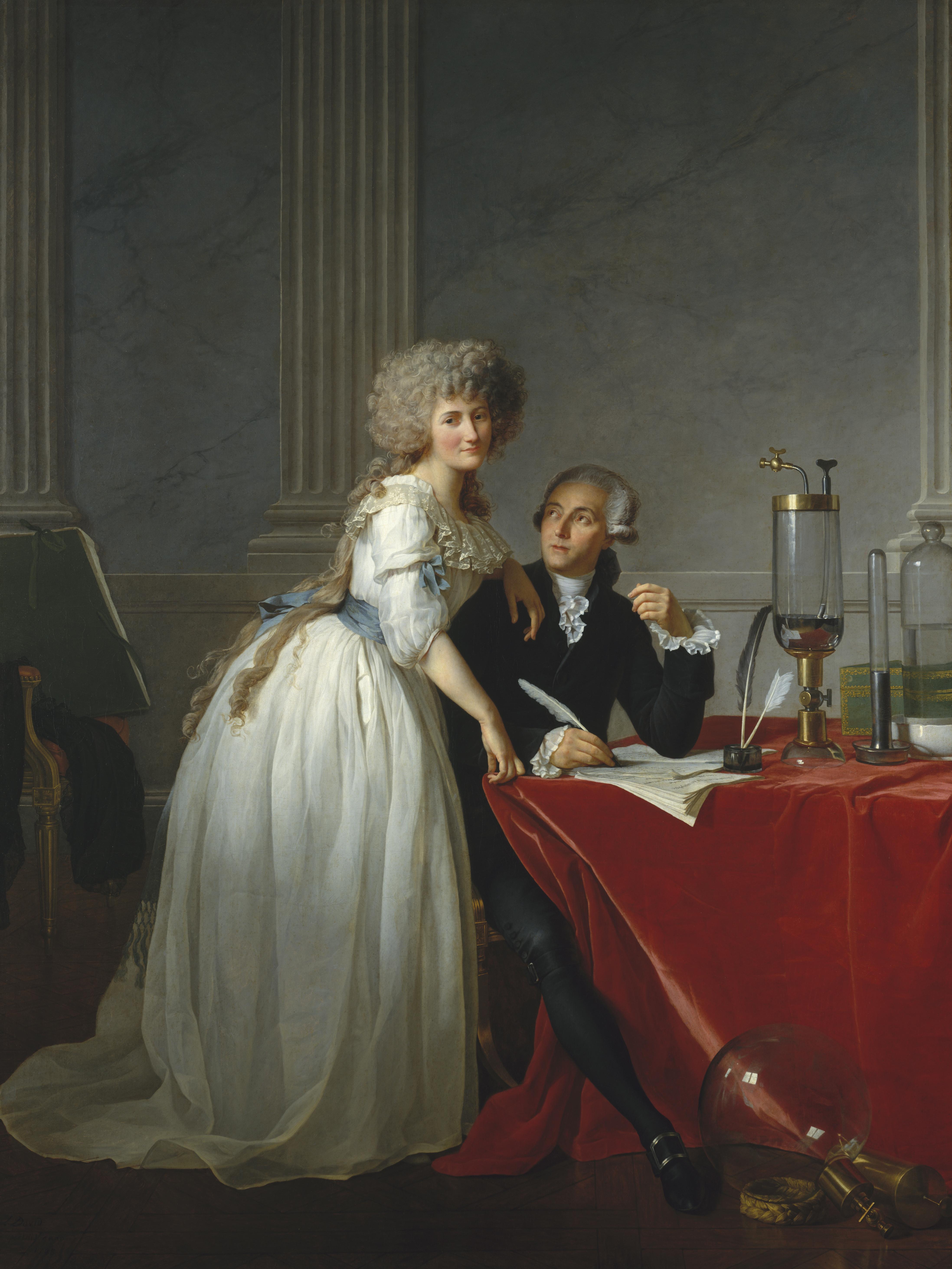
English physician, William Harvey (credit: Wikimedia Commons)
Some of the new beliefs were anathema to medieval thinkers—but the
new beliefs worked. They enabled this “enlightened” subculture within society
to solve problems (e.g., navigate the oceans, cure diseases, predict eclipses,
boost production in industry and agriculture, and, especially, make increasingly
deadly weapons). This new subculture within Europe’s nations was therefore able
to increase its community of followers and its range of influence at a rate
that the old Church and aristocracy, in the end, could not match. As was noted
above, science continued attracting new followers because the miracles of science
can be replicated; science works.

Marie and Antoine Lavoisier (artist: David) (credit: Wikipedia)
This scientific way of thinking was further employed by geniuses
like Isaac Newton, William Harvey, Michael Faraday, Antoine Lavoisier, and
others. Its gurus piled up successes in the hard market of physical results. Of
those who resisted the new way, some were converted by reason, some went down
in military defeats, some worked out compromises, and some just got old and
died, still resisting the new ways and preaching the old ones to smaller and
smaller audiences. The Enlightenment, as it is now called, had taken over.
Other societies that operated under world views in which humans
were thought to have little ability to control the events of life are to be
found in all countries and all eras of history, but we don’t need to discuss
them all. The point is that the advancing worldview by the late nineteenth and
early twentieth centuries, around the planet, was the one we call scientific, or what is also called "the Enlightenment view".
No comments:
Post a Comment
What are your thoughts now? Comment and I will reply. I promise.